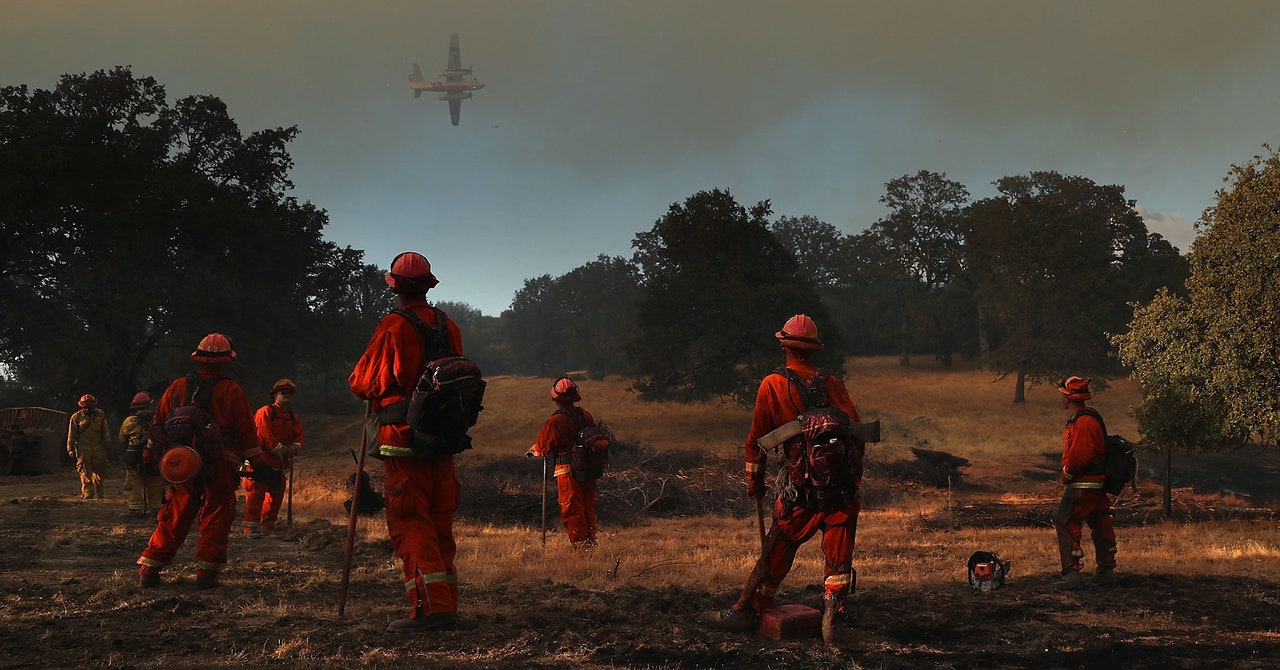Even during a normal wildfire season on the West Coast, the life of a wildland firefighter is brutal. They’re digging trenches by hand to create fire breaks, breathing smoke, and baking in unrelenting heat. And now the region prepares to face a fire season like no other, as the Covid-19 pandemic has brought with it a logistical nightmare: How do you mobilize an army of first responders while keeping them socially distanced, while also preparing for the possibility of having to evacuate whole communities to safety?
“If you look at a fire engine going down the street, there’s four personnel inside who technically are not socially distanced,” says Mike Mohler, deputy director of the California Department of Forestry and Fire Protection, also known as Cal Fire. “But when we look at a large wildland fire, our base camp operation can hold sometimes up to 6,000 personnel.”
Included among them are of course the firefighters streaming in and out from the wildfire’s front lines. But that figure also counts paramedics, as well as law enforcement officers who watch over the California prison inmates who run the kitchens. Private vendors are also coming in and out, delivering and maintaining trailers and portable toilets. And that’s not to mention the government officials who are coordinating the response and journalists covering the story. All of them have to be socially distanced, when possible. After all, paramedics and police may have already been exposed to the virus in their day-to-day work, and may not be showing symptoms. An outbreak at a base camp could easily hobble the fight against a wildfire, which may last for weeks.
Before each fire season—which in California begins around this time of year and runs through November, though climate change is threatening to make wildfires a year-round threat—Cal Fire surveys the state for open spaces suitable for these camps, like fairgrounds and parks. “What we’re looking at now with Covid-19 is that footprint is going to take on a much larger area,” Mohler says. That space, he says, is for socially distancing, “just some simple things we would never have thought of prior to Covid-19, like feeding and sleeping.”
Got a coronavirus-related news tip? Send it to us at covidtips@wired.com.
It’s a bit easier to distance firefighters on the front lines of a wildfire, at least. The rule already in place for hand crews—the firefighters digging out fire breaks with hand tools—is to “keep your dime,” or stay 10 feet away from the next firefighter so you don’t maim them with a pickax. Still, you can’t socially distance inside a firetruck on the ride to

